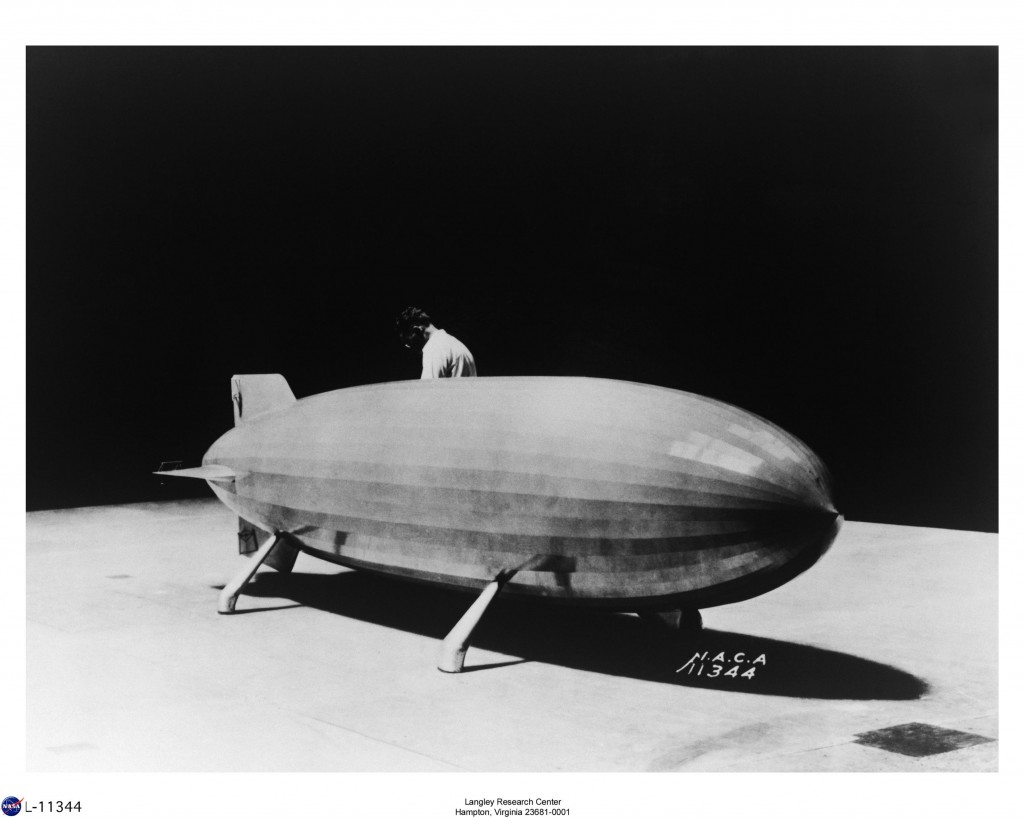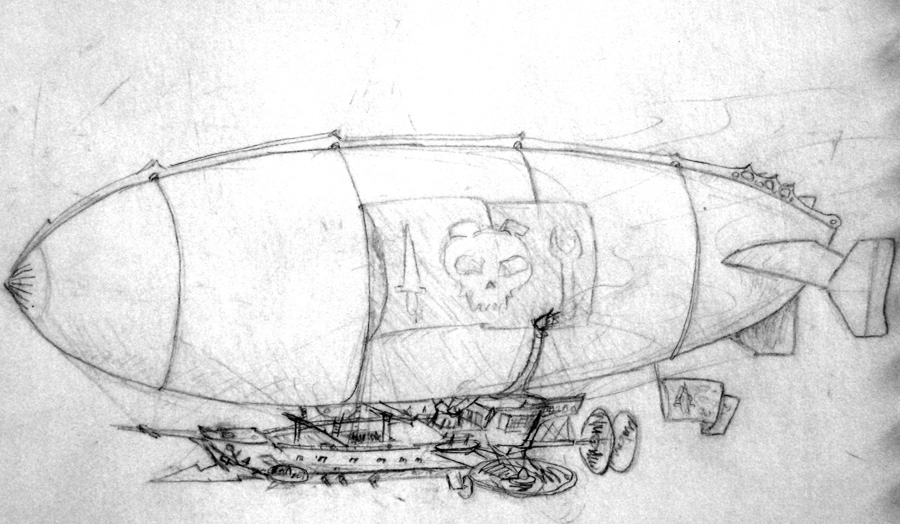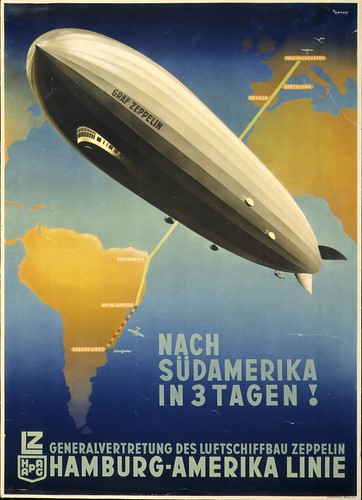I’ve become a great fan of airship history and lore. As captain and creator of the USAS C.E. Rosendahl, accuracy, plausibility and function are all very important to me when creating my floating gas bag based transport. My research has come from various sources; books, the Internet Archive, hundreds of images, real world ships, and hands on experience. I even took up sailing on tall ships to learn more about ship construction, but that’s a story for another day.
NASA
 Of all places, NASA is a gem for research as, well, NASA has researched airships of course.
Of all places, NASA is a gem for research as, well, NASA has researched airships of course.
A thorough tour of the NASA Image Exchange is in order. A search for “airship”, “Macon”, or “Akron” yields excellent results of science in action. Photos include in-flight, R&D, wind tunnels, and large models.
Deviant Art
 Lacking ideas? If Airship-builder’s block has set its curse upon you, you can always look up the latest designs in airship attire, imagery and art at Deviant Art. You’ll find more costumes and cosplay than airship construction, but its still an excellent resource.
Lacking ideas? If Airship-builder’s block has set its curse upon you, you can always look up the latest designs in airship attire, imagery and art at Deviant Art. You’ll find more costumes and cosplay than airship construction, but its still an excellent resource.
Related Blogs and Searches
 Over at Airships.net, you can find excellent information on the history, misconceptions and stories of airships. The blog also highlights photos and blueprints.
Over at Airships.net, you can find excellent information on the history, misconceptions and stories of airships. The blog also highlights photos and blueprints.
 Fings at Flickr has taken the time to scan in or enhance many Archive.org book illustrations, including an additional full-color German airship poster “To South America in 3 Days”.
Fings at Flickr has taken the time to scan in or enhance many Archive.org book illustrations, including an additional full-color German airship poster “To South America in 3 Days”.
Archive.org
The Internet Archive is an outstanding website, full of ephemeral films, music, imagery and texts. Their collection of texts includes many old-timey books free of copyright and absolutely packed with photos, ideas, stories, first-hand flight accounts and more.
Zeppelin; The Story of a Great Achievement is a public-domain book from the 1920s. Perhaps more important than the text in the publication is the pictures. Every other page is a delightful picture or schematic of various Zeppelins. This absolutely fantastic book from 1917 features schematics, photos, plans, drawings and a very robust history of airships.
Another fantistic find at the Archive is this amazing book featuring plans, photos, construction blueprints and more. D’Orcy’s airship manual; an international register of airships with a compendium of the airship’s elementary mechanics
Flying machines: past, present, and future. A popular account of flying machines, dirigible balloons and aeroplane from 1914 is an astounding book, listing many different airships and balloons, and is deliciously full of photos, blueprints and plans. The back of the book even lists a (then) current list of suppliers and resources for all things electrical, gas, construction and airship so you can build your own! Many airships-attached-to-boats are also illustrated, which is the way I’ve done with the Rosendahl.
If you’re working on an airship of your own (real or imagined), please post a link in the comments!


5 Comments.
As a long time airship enthusiast, I’ve put together a list of airship pages on my List of Interesting Things (http://paulgazis.com/IntLinks.htm). This may include one or two you haven’t listed. If you haven’t seen them, you should check out John Dziadeck’s Airship and Zeppelin Sites.
I most definitely agree with you about accuracy. I’ve gone to considerable lengths to get the various performance, operation, and construction details right in The Flying Cloud (http://airships.paulgazis.com/). Was this worth the effort? I leave this for you to decide. Perhaps we should compare notes some day.
Samuel, that is a fantastic post. Thank you for all the in depth knowledge.
want more information on local punkers: my great grand father was president of B.O. railroad, and was into lighter and heavy aircraft.
I’m designing the airships for a friend’s steampunk novel, and need some information about about the physics of airships. I have a bachelor’s degree in physics and math and programming experience, so can deal with something that’s a bit technical and want something that gives a mathematical treatment of things like buoyancy (I need to calculate how big the gas canopy needs to be, how much drag and how it varies with velocity etc.) . Can anybody recommend any suitable books?
@ Paul Patton
here’s a link to airship Simon http://www.znuerb.com/Simon/design.html
Hope that’s what you’re looking for